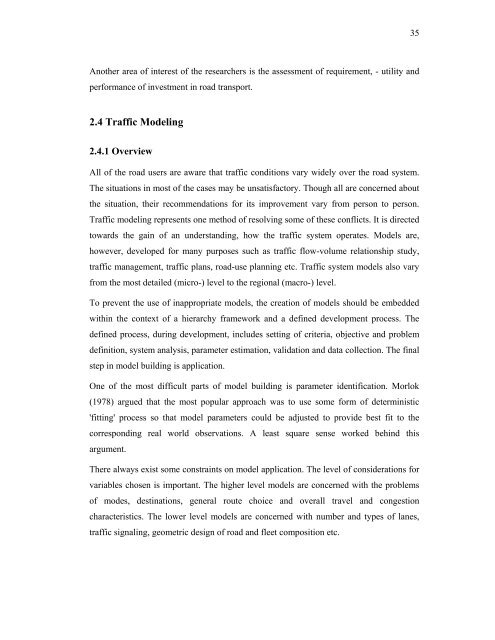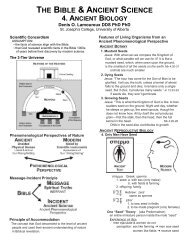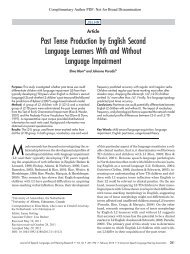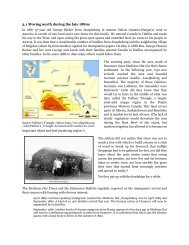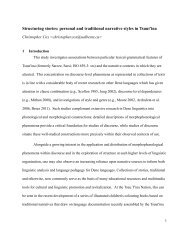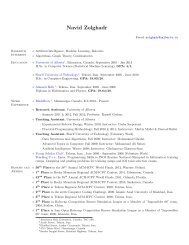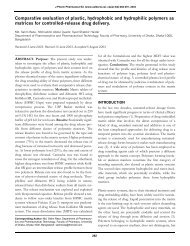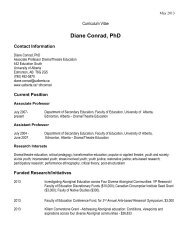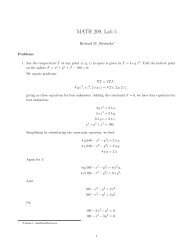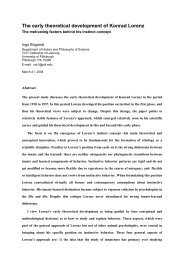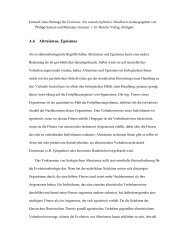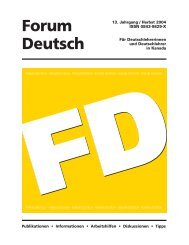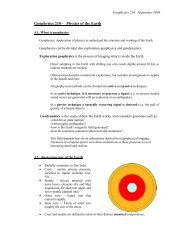Evaluation of Planning Options to Alleviate Traffic Congestion and ...
Evaluation of Planning Options to Alleviate Traffic Congestion and ...
Evaluation of Planning Options to Alleviate Traffic Congestion and ...
You also want an ePaper? Increase the reach of your titles
YUMPU automatically turns print PDFs into web optimized ePapers that Google loves.
35<br />
Another area <strong>of</strong> interest <strong>of</strong> the researchers is the assessment <strong>of</strong> requirement, - utility <strong>and</strong><br />
performance <strong>of</strong> investment in road transport.<br />
2.4 <strong>Traffic</strong> Modeling<br />
2.4.1 Overview<br />
All <strong>of</strong> the road users are aware that traffic conditions vary widely over the road system.<br />
The situations in most <strong>of</strong> the cases may be unsatisfac<strong>to</strong>ry. Though all are concerned about<br />
the situation, their recommendations for its improvement vary from person <strong>to</strong> person.<br />
<strong>Traffic</strong> modeling represents one method <strong>of</strong> resolving some <strong>of</strong> these conflicts. It is directed<br />
<strong>to</strong>wards the gain <strong>of</strong> an underst<strong>and</strong>ing, how the traffic system operates. Models are,<br />
however, developed for many purposes such as traffic flow-volume relationship study,<br />
traffic management, traffic plans, road-use planning etc. <strong>Traffic</strong> system models also vary<br />
from the most detailed (micro-) level <strong>to</strong> the regional (macro-) level.<br />
To prevent the use <strong>of</strong> inappropriate models, the creation <strong>of</strong> models should be embedded<br />
within the context <strong>of</strong> a hierarchy framework <strong>and</strong> a defined development process. The<br />
defined process, during development, includes setting <strong>of</strong> criteria, objective <strong>and</strong> problem<br />
definition, system analysis, parameter estimation, validation <strong>and</strong> data collection. The final<br />
step in model building is application.<br />
One <strong>of</strong> the most difficult parts <strong>of</strong> model building is parameter identification. Morlok<br />
(1978) argued that the most popular approach was <strong>to</strong> use some form <strong>of</strong> deterministic<br />
'fitting' process so that model parameters could be adjusted <strong>to</strong> provide best fit <strong>to</strong> the<br />
corresponding real world observations. A least square sense worked behind this<br />
argument.<br />
There always exist some constraints on model application. The level <strong>of</strong> considerations for<br />
variables chosen is important. The higher level models are concerned with the problems<br />
<strong>of</strong> modes, destinations, general route choice <strong>and</strong> overall travel <strong>and</strong> congestion<br />
characteristics. The lower level models are concerned with number <strong>and</strong> types <strong>of</strong> lanes,<br />
traffic signaling, geometric design <strong>of</strong> road <strong>and</strong> fleet composition etc.


